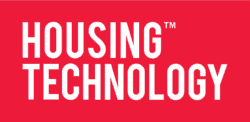In our experience and from anecdotal reports, up to 80 per cent of non-IT staff are unaware of the remit of an IT department. IT departments do a superb job of engineering, but expectations of IT often include software development or process refactoring. These are increasingly arenas for specialist outsourcing.
A rock and a hard place
Historically, housing providers have found themselves navigating between the Scylla of multiple systems that can sprawl out of control or the Charybdis of one ‘super system’ that claims to do everything – both of these are extremes which need to be avoided.
Spreadsheet sprawl
Where a housing provider has multiple systems (who doesn’t?), spreadsheets are often a primary source of information, yet they may be only part-documented or not coded in the ‘house style’ because the spreadsheets’ creators come from all departments, not just IT. Due to the variety of contributors, spreadsheets may become corrupted, out of date or password-protected, with the creator having left the organisation without passing on clear instructions.
The long-awaited ‘super system’…
Over the decades, we’ve been promised a single system that does everything. However, there are few examples of that actually happening without a layering process which results in such complexity that those people tasked with maintaining it become culturally resistant to change:
“Can we delete that table? After all, it has no relations.”
“I don’t know – maybe there is something that relies on it.”
“We can’t change this – something might break.”
“I’m not sure why they set it up this way, but there must have been a good reason.”
This results in tension between IT staff and business users, as IT departments are tempted to develop ‘pushback’ as their primary interaction skill, rather than engagement and listening, when considering new feature requests from business and operational departments.
Solve for structure, not just systems
A different approach, taken by technology providers such as Occubly, involves data structures closely reflecting real-world data. This approach is known as reducing the ‘impedance mismatch’ between real-world assets and their data representations.
Impedance can be described as the bottleneck caused by different ways of expressing the same thing, between two systems that need to communicate. Impedance causes delays and uncertainties about data integrity, leading to incorrect compliance and asset management data causing financial losses.
Once impedance creeps in, it grows like Japanese knotweed because the thread connecting the real world to data processing is broken. The effects can include the creation of enormous Excel spreadsheets which attempt to behave as databases, but struggle to escape their natural two-dimensional, non-relational aspect.
This effect is sometimes called ‘systemic delay propagation’; each interface becomes a compromise between the individual capabilities of the interacting systems, rather than the business purpose. This is how IT departments find themselves at the end of this chain, dealing with issues which are nothing to do with their core engineering remit.
The people dimension
Another issue to be aware of with any digital transformation is resistance to change.
IT staff may worry about maintaining their involvement at the same level within the new ways of working, while operational staff may fear that efficiency improvements will make their roles redundant.
Both of these concerns can be addressed through upskilling and adjusting the balance of expertise between internal staff and contractors hired specific to the purpose. The real win is that staff will be released from many boring, inefficient and repetitive tasks to focus instead on more rewarding and added-value activities.
The solution provider challenge
Operational managers are familiar with being told by software providers that something they want is not possible with their current system, or that some difficult new way of processing information is actually industry best practice.
This is important to understand when interacting with your IT department, who will tend to focus on security, networking, load-balancing, uptime and disaster recovery, rather than software development.
The challenge here is for external solution providers to listen and learn.
Solutions providers can decide to accept this challenge by basing their data analysis and data management on new ‘data structure’ audits designed to capture the greatest pain points where lost time, inefficient processes and business-critical outcomes overlap. The difference with a typical data audit is that the goal is not to ‘score’ the organisation nor make abstract recommendations to be implemented by someone else later, but to directly use this information to eliminate those pain points ourselves.
Conclusion
Post-Grenfell and coronavirus, housing providers are on an Odyssey of increasing compliance complexity and responsibility. Perhaps the best way to steer between Scylla and Charybdis is to make sure your vessel is well-documented, with staff upskilled and motivated, and as little impedance from navigation to rudder and sails as possible, an approach to make even Odysseus proud.
Ian Mihajlovic is the CEO of Occubly.

